 Be Inspired Blog - Arizona
Be Inspired Blog - Arizona
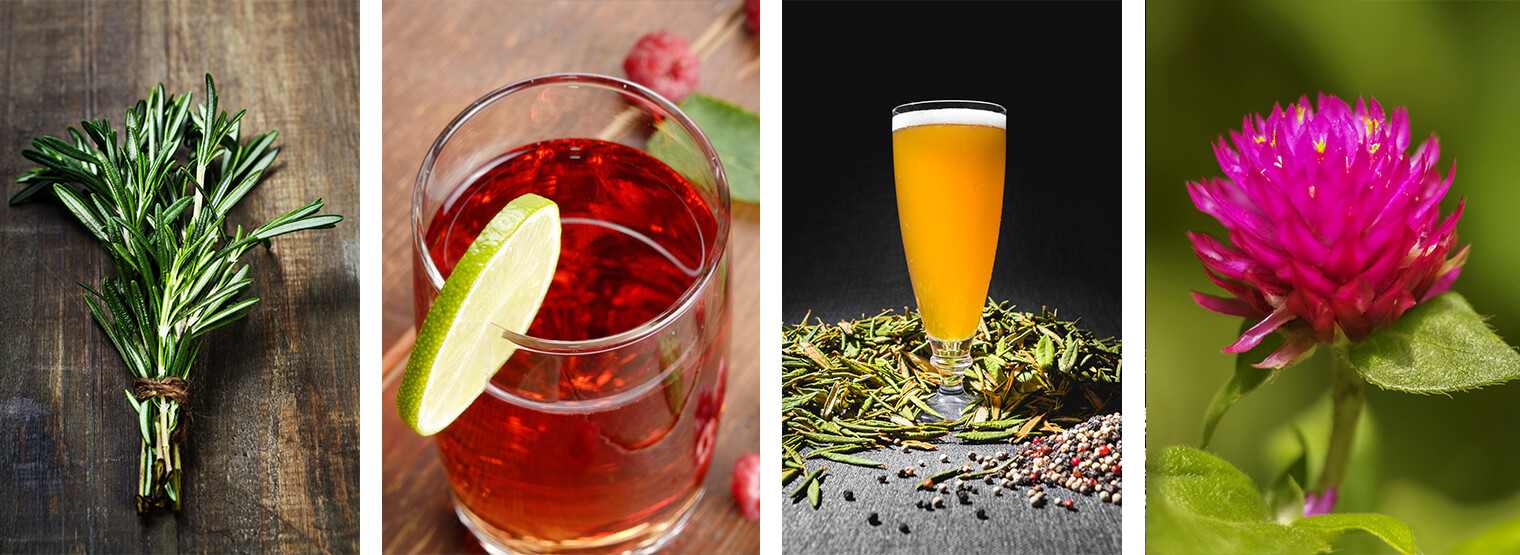
Who Knew You Can Use These Plants In Homebrewing?
Oktoberfest has finished in Germany, but since it's still October, the topic of fall homebrewing is alight, especially as apple cider is hitting the shelves. Did you know Phoenix, Arizona is one of the top six homebrewing destinations in the United States? With a number of homebrew clubs in Arizona, you can find your local shop and give it a go.
Now that the weather cooling down it’s a perfect time to try your hand at homebrewing. It has its own value when it comes to drinking something that you designed and created with your own skill. Trying something new and challenging yourself is rewarding on its own and utilizing plants to make it happen is a raw and exciting process.
It’s not difficult or expensive to get started, but it’s important to learn about the homebrew process before you get started.
What Exactly is Homebrew?
Beer is one of the most common forms for homebrewing, aside from making wine, mead, cider and kombucha. Managing your fermentation and learning how to pitch your yeast takes time, patience and care, which is what homebrewing is all about. The sense of pride you feel when your brew is finished is what makes a novice a brewer for life. To become an expert homebrewer, it’s important to get down to the basics.
Homebrew Choices for Beer
For those interested in making beer, you will be working with hops. As described by the American Homebrewer Association,“The hop is a dioecious plant, which means they have separate male and female plants.” The cone shaped flowers of the hardy female hop plant (Humulus lupulus) provides beer the characteristics for bitterness, aroma and flavor, while the male plant pollinates. As a side note, hops were historically an important beer preservative before refrigeration.
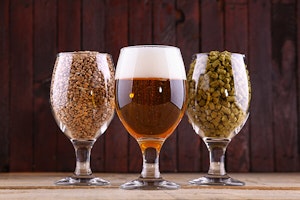 When you’re considering brewing beer, you will want to choose a hop strain with high amounts of alpha acids. Higher acids give your beer that perfect sharp bitterness. Essential oils are also important in your hop strain to provide aroma.
When you’re considering brewing beer, you will want to choose a hop strain with high amounts of alpha acids. Higher acids give your beer that perfect sharp bitterness. Essential oils are also important in your hop strain to provide aroma.
Hops are categorized by their geography of origin. The three most prominent categories are Noble hops (which come from Germany and the Czech Republic), American hops and English hops. Within those three categories, there are many varieties to choose from. Popular high alpha acidic hops include Chinook, Columbus and Simcoe. Here is some information from Kegerator about their taste and characteristics.
- Chinook: The American Brewer’s Association considers the Chinook hop plants as one of the top five hops; it is also a favorite for mainstream brewers like Coors. Craft brewers and mainstream brewers both like Chinook as a bittering hop but the slightly spicy, light and smoky quality are what attracts them the most.
- Columbus: This hop is most often used for bittering and its high oil content is great for dry hopping. Sometimes this hop has the aroma of black pepper and licorice, as well as citrus characteristics when the beer is fresh.
- Simcoe: With fruity and earthy notes, pine and woodsy aromas come from this hop. This flavor and aroma are quite unique.
Fun Fact: Homebrew Reduces Hangovers
Try homebrewing beer to save you from calling in sick the day after a party! Commercial beers strip Vitamin B due to its filtration and pasteurization process, which leads you to have a headache the next day. You can actually reduce hangovers by planting your own hops and brewing your beer at home. The large quantity of yeast with Vitamin B reduces the hangover symptoms naturally.
How to Homebrew Your Beer
If you’re interested in homebrewing in Arizona, the Haines and the American Homebrewing Association have a lot of helpful details on how you can get started:
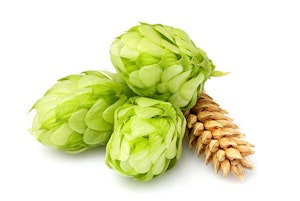 Homebrew equipment:
Homebrew equipment:
- 6.5-gallon fermenting bucket
- 6.5-gallon bottling bucket
- 4-to-5-gallon brew pot
- No-rinse sanitizer
- Plastic tubing
- An airlock inserted on top of the fermenter to allow carbon dioxide to escape without allowing contaminants to sneak in
Bottling tools:
- Bottles and bottle caps
- Racking cane (used to transfer beer from fermenter to bottling bucket)
- Bottle brush
- Bottle filler
Household items that might come in handy:
- Stirring spoon
- Measuring cup
- Strainer
- Thermometer
Ingredients:
- Grains, if you are doing an all-grain homebrew
- Bottled or filtered water (this is important when homebrewing due to Arizona’s hard water)
Fermentation Timing
Brewing is a perfect hobby for busy people. It’s mostly a waiting game after a few hours’ time of setup spread out over several weeks. Here are some examples of fermentation times for beer that you can look forward to along with the brewing time needed.
Fermentation time:
- Ale: About two to three weeks for fermentation.
- Lager: About two months.
- Brett beer: About six months.
Brewing time:
- Extract: 1 to 1.5 hours on brew day.
- All-grain: 6 to 8 hours on brew day.
For beer homebrewing supplies, including hops, we recommend shopping a local homebrew store. However, for fruits and other edibles that can make your homebrew unique, stop by your local SummerWinds Nursery.
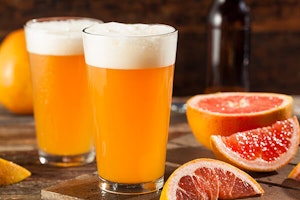 These plants can help you get creative with your homebrew!
These plants can help you get creative with your homebrew!
Customize your homebrew by adding fruits and spices to it, such as:
- Strawberries, dried cherries, apricots and more...
- Cinnamon, fresh ginger, cardamon and more...
For more idea, check out the Kitchn's, " 5 Easy Ways to Play Around with Your Next Homebrew."
Homebrew Choices for Wine
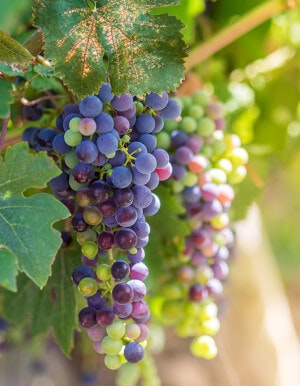 Great Fermentation says, “Making your own wine is easier than you think and it’s actually easier than brewing your own beer.” Wine is usually considered a fermented drink made from grapes, but you can make country wine from flowers and vegetables in your garden too!
Great Fermentation says, “Making your own wine is easier than you think and it’s actually easier than brewing your own beer.” Wine is usually considered a fermented drink made from grapes, but you can make country wine from flowers and vegetables in your garden too!
Grapes to Use for Your Homebrew
Here are French Scouts’ accounts of what top grapes for wines taste like.
- Chardonnay: The Chardonnay is planted the most and puts out citrus fruit flavors, hints of melon, vanilla, and creaminess.
- Cabernet Sauvignon: This wine is one of the world’s best varieties, yet it is often blended with cabernet franc and merlot. A younger grape can give your wine a full-bodied, but firm and rich taste.
- Pinot Noir: The structure is delicate and is very aromatic with fruity scents.
Non-Grape Alternatives to Use for Your Homebrew
As for non-grape homebrew wines, fruit, herb, and flower combinations can be mixed with sugar and yeast. Here are the flowers that can be used according to Herbal Academy, many of which can be found at your local SummerWinds Nursery:
 Rose Petal Wine: Rose hips can make a sweet dessert wine that gives a delicate flavor.
Rose Petal Wine: Rose hips can make a sweet dessert wine that gives a delicate flavor. - Dandelion Wine: These plants aren’t just weeds! The flowers can be used to make a light and floral country wine that at one time was considered acceptable as a medicinal tonic.
- Daisy Wine: Ox-eye daisies have often been used in medicinal preparations to assist with coughs or in salves for cuts and scrapes. The ox-eye daisy flower head can be used to make a smooth and floral wine.
- Rosemary Wine: While making wine from rosemary isn’t exactly a traditional choice, the green leaves are used to make a clear wine with a rosemary flavor that can be used for drinking or cooking.
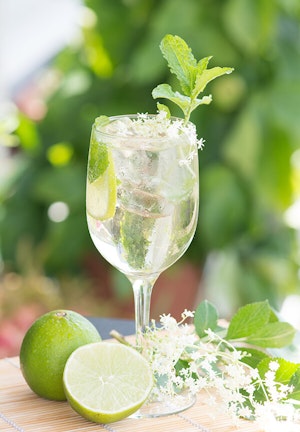 Elderflower Wine: Elderberries can make a beautifully colored wine that is not only easy to make, but also easy to drink thanks to its floral and crisp taste.
Elderflower Wine: Elderberries can make a beautifully colored wine that is not only easy to make, but also easy to drink thanks to its floral and crisp taste. - Lemon Balm Wine: Lemon balm is a common garden herb that is used to make a smooth, dry country wine.
- Red Clover Wine: Used in medicinal preparations for a variety of health issues, this pretty rosy flower can be collected to make a sweet and comforting wine.
- Rice Wine: A wine that you wouldn’t typically imagine appearing on this list is the rice wine. This wine is made from cooked rice, yeast, and a special bacteria that you can get from online or from an Asian market. Rice wine are great for sauces and marinades.
Your wines’ quality depends on you picking your fruit when it’s both ripe and mature. Make sure to harvest your plants’ fruit and immediately take it back to the winery, or rather, your garage.
Additional Homebrew Options
Beers and wines aren’t the only homebrew options available. Here are two more varieties you may want to consider.
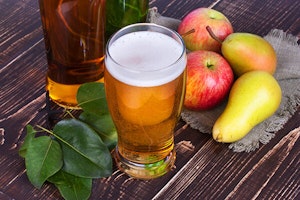 Ciders
Ciders
It’s fall, which means the time for cider drinking is here. Cider making consists of blending juices and spices with apples to create the perfect balance of sweet flavor, acidity and tannins. You can also make a cider from a blend of pears and apples. At SummerWinds Nursery, we offer a variety of apple and pear trees for your home orchard!
Kombucha, Fermented Tea
This is a fermented tea that’s become very popular lately. It has a “mother culture” that resembles a mushroom called a “SCOBY,” which can be bought online or grown by a commercial bottle of raw unflavored Kombucha.
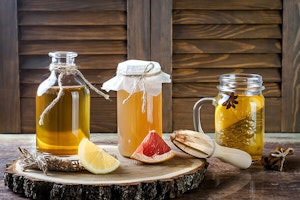 Are You Ready to Homebrew?
Are You Ready to Homebrew?
Homebrewing can open a new hobby and a community to work with. All over the world, brewers are experimenting with different styles, ingredients and techniques. With your imagination, the possibilities are limitless and the homebrewing community is growing! What are you planning to homebrew?

